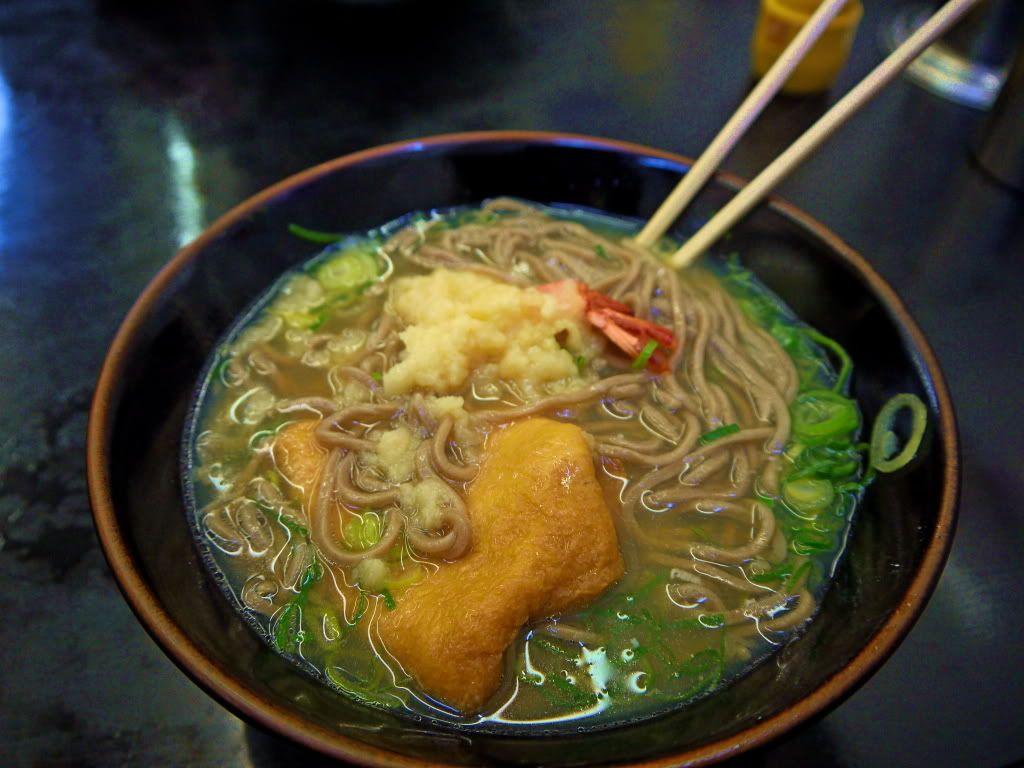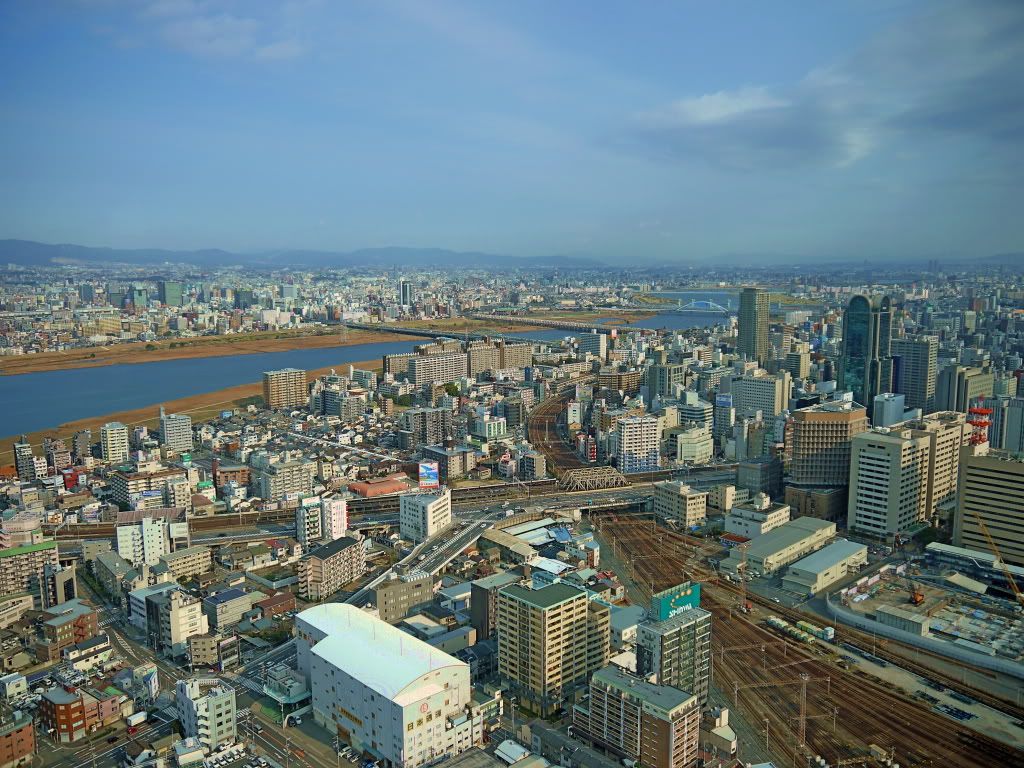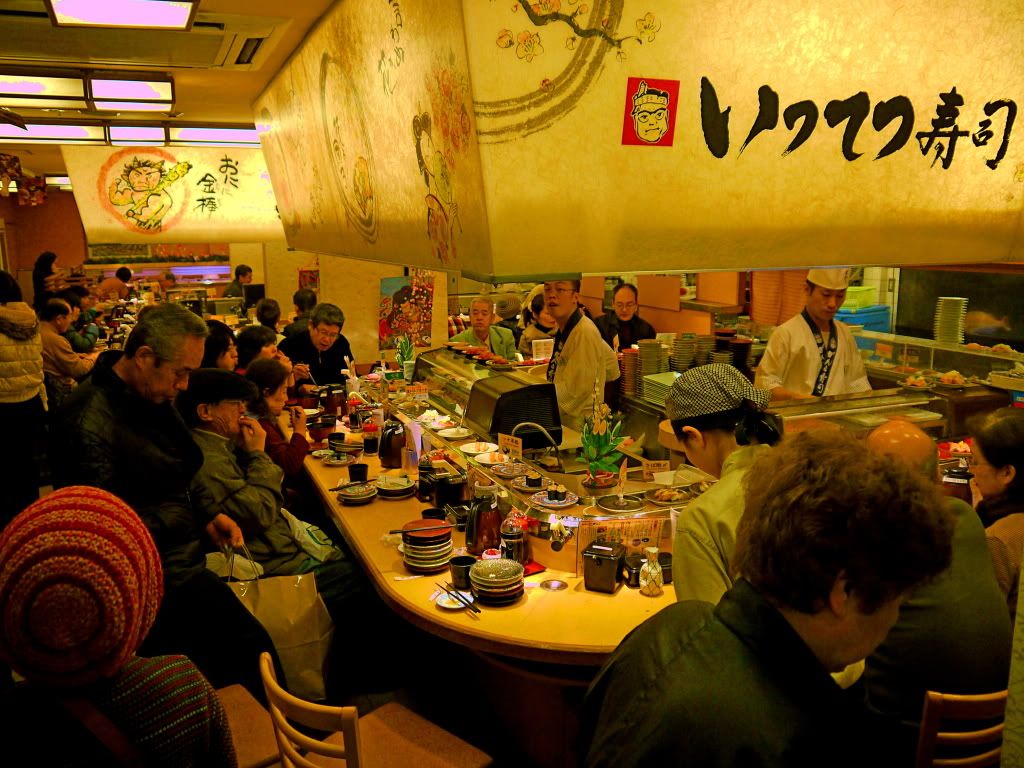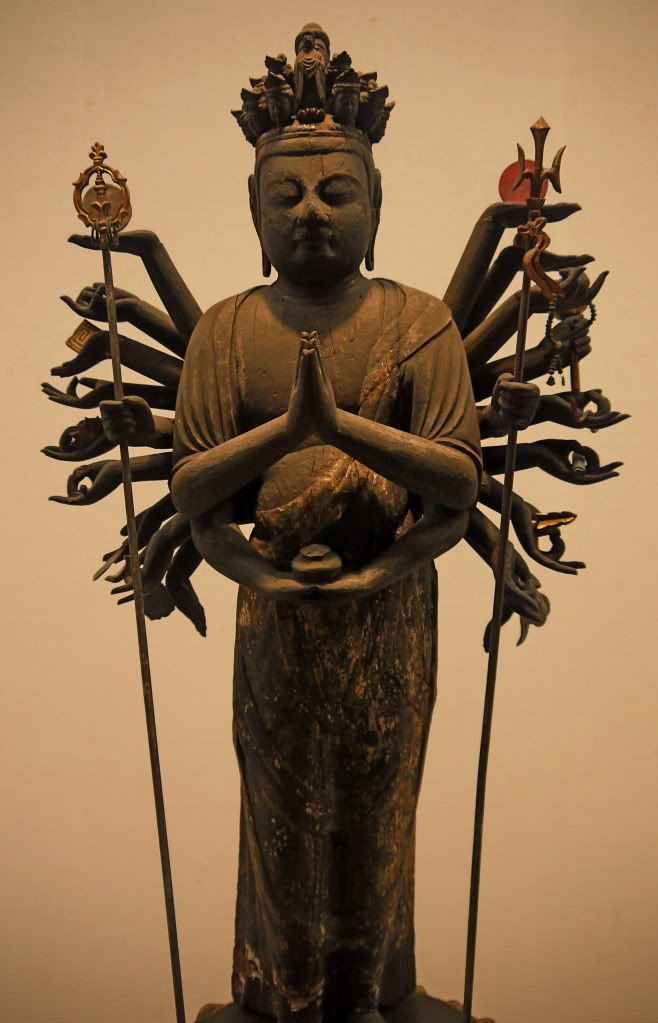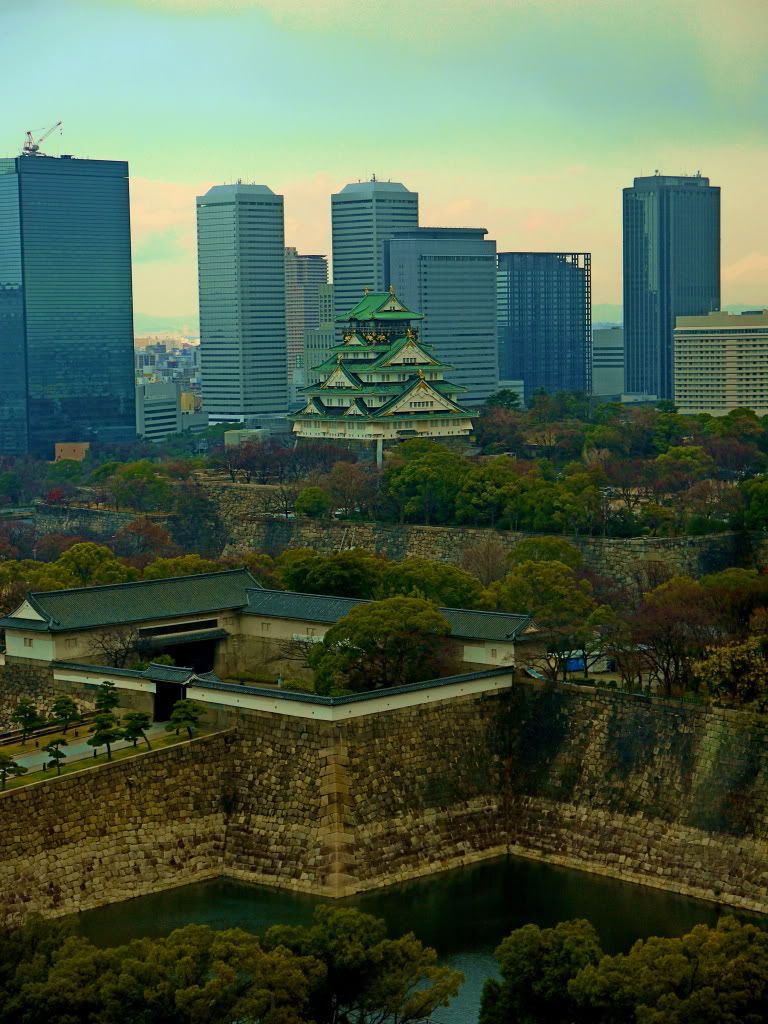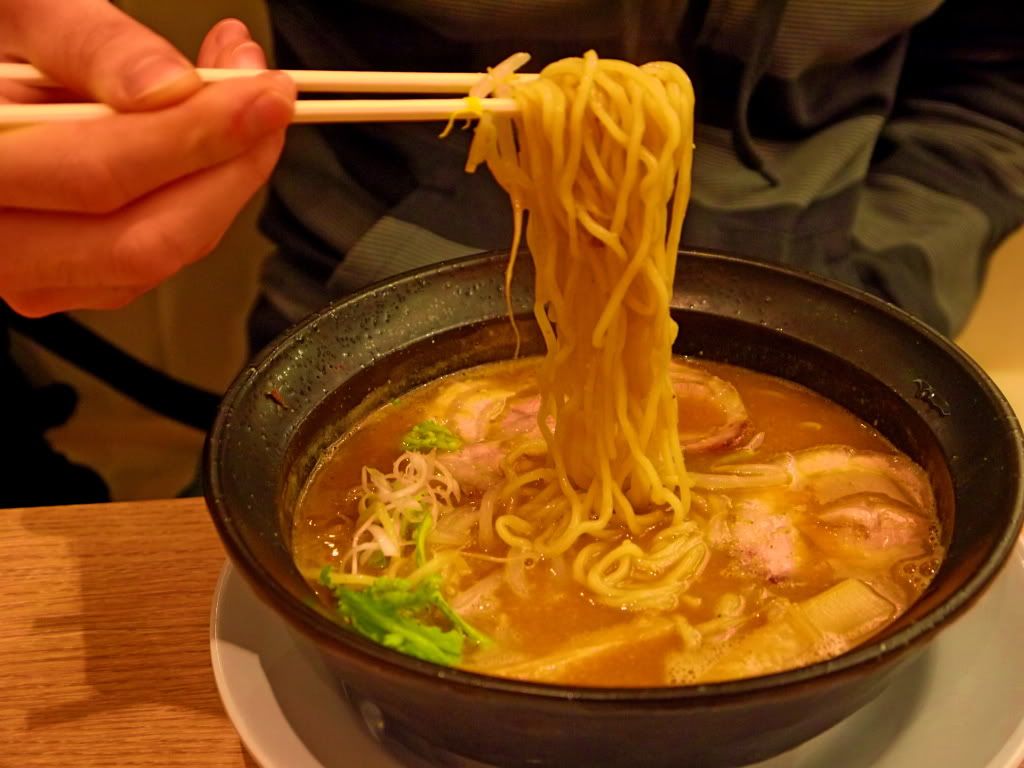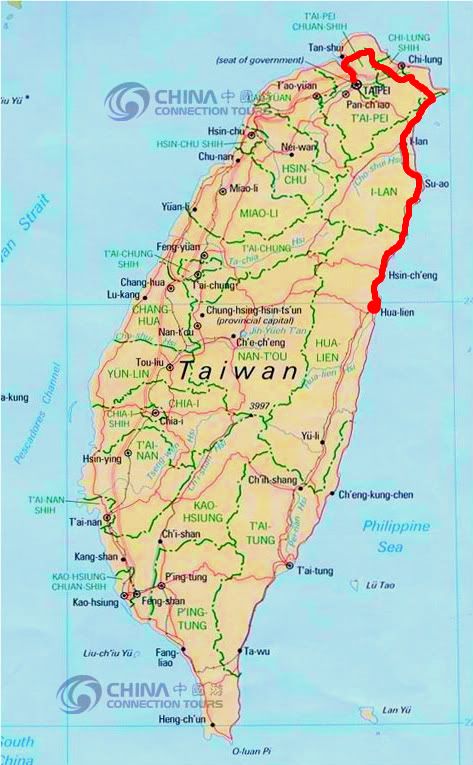It turns out that I very thoroughly photo-documented the process to making this dish, so here it is in its entirety. Note the spatula doodad.
Step 1: The Bowl
At any okonomiyaki (don't know what okonomi means, but the yaki appears often and means grill as far as I can discern) restaurant, the whole adventure starts with the decision: what goes in your bowl? It's similar to Subway. Before you customize and whatever, you need a basic meat package. For this I've gone with shrimp and squid, but they've also got chicken, pork, and beef in all sorts of combinations. Also in the bowl will be a heavy handful of shredded cabbage with a raw egg and a dollop of batter. Everything gets stirred thoroughly before we start.
Step 2: Shaping
After you've stirred the bowl to an even consistency and dumped it onto the grill, you have to scrape it into the pancake shape. This is one of the ways the little spatula doodad comes in handy.
Step 3: Wait
They must cook it on pretty low heat, because it takes about 15 minutes from start to finish for the sweet rewards to be yours. I held my hand over the flat top to confirm this, but it felt hotter than I had anticipated. Regardless, there's a lot of waiting involved in this food. Plenty of time for you to deal with the extra, Osaka-only step.
Step 4: Yakiudon
While you wait for the pancake to reach flipability, you can opt for the Osaka twist. A heap of stir fried udon noodles makes a great addition texturally.
Step 5: Bonito Flakes
One of the signature parts of all okonomiyaki, these brown, translucent flakes are in fact a dried and then finely shaved fish. Bonito flakes, when they warm, crinkle and flap like a handful of baking butterfly wings.
Step 6: Flip
Now that you have all your primary ingredients and the bottom is crisping up nicely, it's time for the flip.
Step 7: Sauce It Up
The bulk of okonomiyaki's flavor is in the sauces. Start with a ladle full of creamy, sour Japanese mayonnaise, then add the savory, sugary eel sauce (like a thick, rich teriyaki). Swirl them all together to evenly distribute.
Step 8: Enjoy
That weird spatula doodad is also great for segmenting and serving "slices" of the okonomiyaki, which is what makes it kind of like pizza.
Step 1: The Bowl
At any okonomiyaki (don't know what okonomi means, but the yaki appears often and means grill as far as I can discern) restaurant, the whole adventure starts with the decision: what goes in your bowl? It's similar to Subway. Before you customize and whatever, you need a basic meat package. For this I've gone with shrimp and squid, but they've also got chicken, pork, and beef in all sorts of combinations. Also in the bowl will be a heavy handful of shredded cabbage with a raw egg and a dollop of batter. Everything gets stirred thoroughly before we start.
Step 2: Shaping
After you've stirred the bowl to an even consistency and dumped it onto the grill, you have to scrape it into the pancake shape. This is one of the ways the little spatula doodad comes in handy.
Step 3: Wait
They must cook it on pretty low heat, because it takes about 15 minutes from start to finish for the sweet rewards to be yours. I held my hand over the flat top to confirm this, but it felt hotter than I had anticipated. Regardless, there's a lot of waiting involved in this food. Plenty of time for you to deal with the extra, Osaka-only step.
Step 4: Yakiudon
While you wait for the pancake to reach flipability, you can opt for the Osaka twist. A heap of stir fried udon noodles makes a great addition texturally.
Step 5: Bonito Flakes
One of the signature parts of all okonomiyaki, these brown, translucent flakes are in fact a dried and then finely shaved fish. Bonito flakes, when they warm, crinkle and flap like a handful of baking butterfly wings.
Step 6: Flip
Now that you have all your primary ingredients and the bottom is crisping up nicely, it's time for the flip.
Step 7: Sauce It Up
The bulk of okonomiyaki's flavor is in the sauces. Start with a ladle full of creamy, sour Japanese mayonnaise, then add the savory, sugary eel sauce (like a thick, rich teriyaki). Swirl them all together to evenly distribute.
Step 8: Enjoy
That weird spatula doodad is also great for segmenting and serving "slices" of the okonomiyaki, which is what makes it kind of like pizza.











